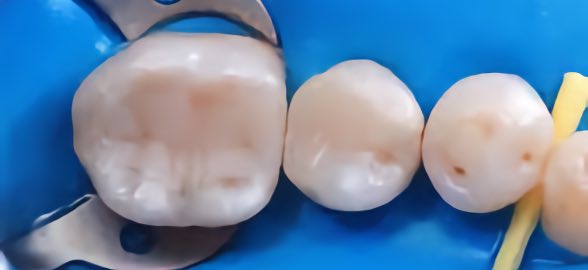A dental matrix is a band that adapts to the surface of the tooth to be restored and reproduces the anatomical contours, replacing the missing wall or walls and containing the restorative material to give it a anatomical shape to the interproximal walls and obtain adequate contact points.
Sometimes choosing a matrix band is not an easy task and that is why in this article we want to tell you how you can select the most appropriate one for each of your clinical cases and what are the factors to consider in your choice. Are you ready?
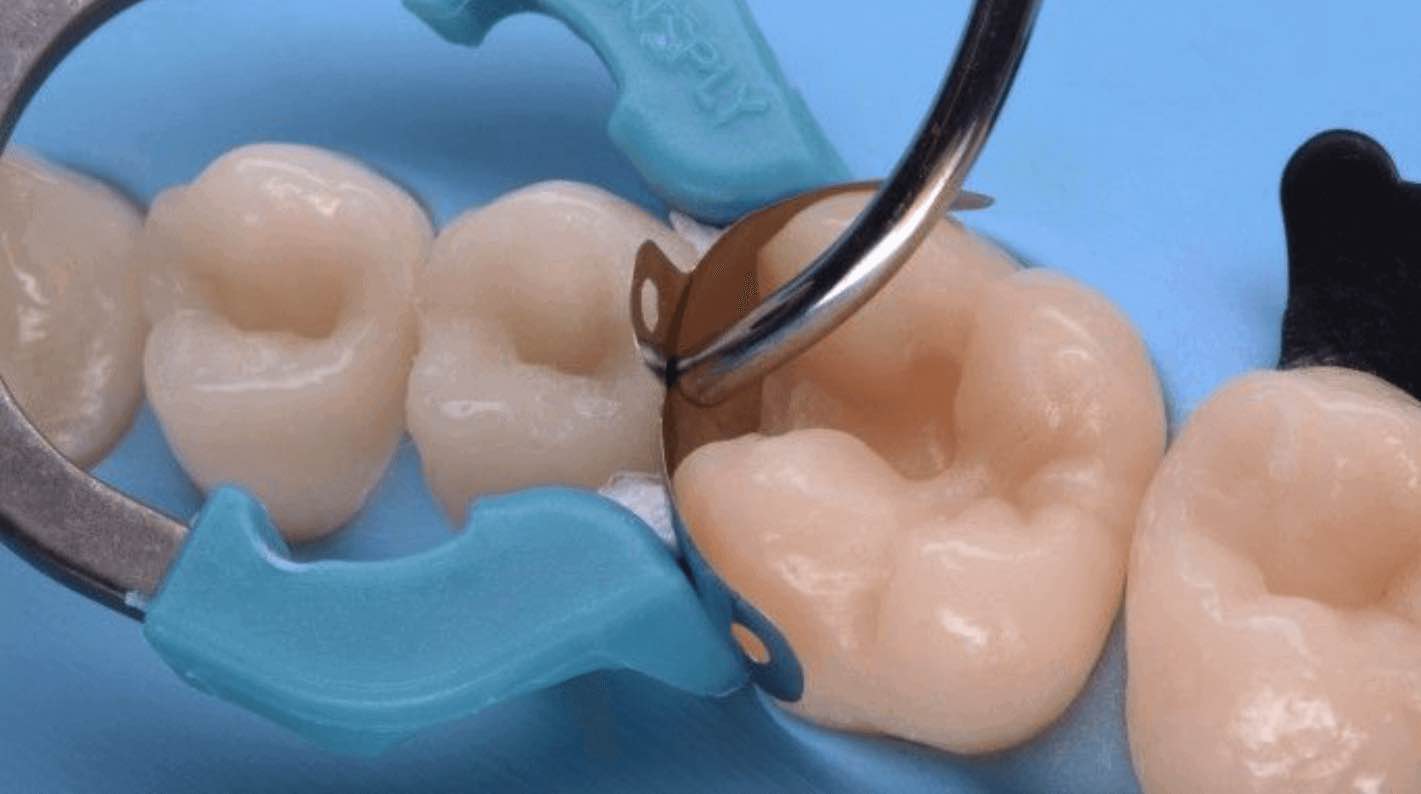
The use of matrices in dentistry
The use of matrices in dentistry allows teeth to be reconstructed according to their original morphology, maintaining their shape, contour and contact points, in order to preserve their function. This important work is carried out by restorative dentistry, which over time has invested its efforts in the development of new techniques and materials that facilitate this task. Among these developments we find the matrix systems, which we will talk about in this article. But first things first.
Why are touchpoints important?
The interdental or interproximal area, that is, between tooth and tooth, is formed by the contact area or relationship, the interproximal niche and the interdental papilla that occupies this space in the form of a triangle. The contacts between the teeth, called interproximal contacts, have the function of protecting the soft tissues and when they are not present, food packing occurs that damages the gingival tissues, causing diseases such as gingivitis and periodontitis. In addition, a correct contact between the teeth favors the stability of the arches through the combined anchorage. So how can we get functional contacts and contours? Dental matrices are the solution.
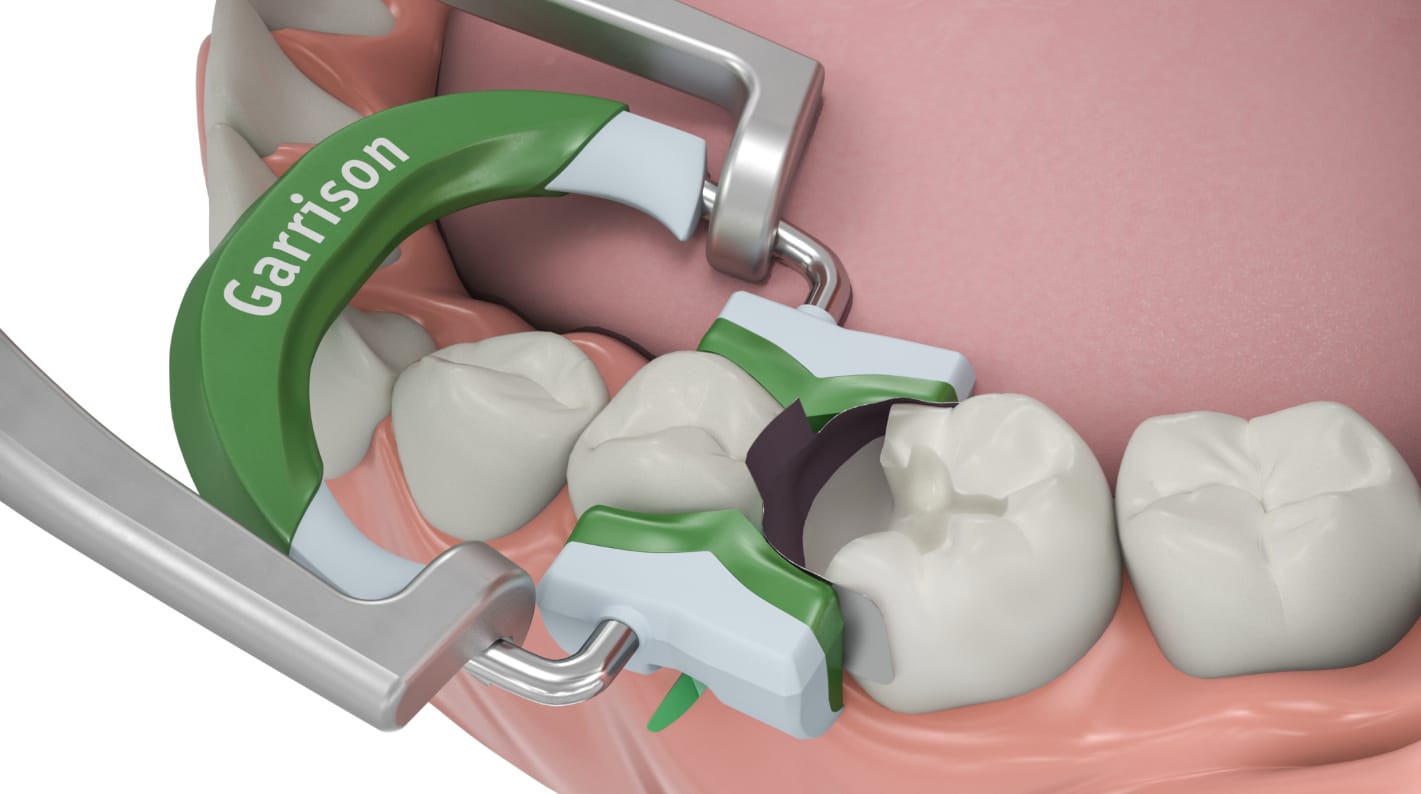
What are the functions of dental matrices?
- Preserve the restorative material, preventing it from spilling over.
- Restore the anatomy of the tooth, helping to reconstruct its contact relationship and the lost contour.
- Restore the biological function of the tooth and protect the supporting tissues, avoiding injuries.
- Contribute to the surface finish, achieving a non-retentive surface for plaque or food debris.
- Reduce the probability of secondary caries.
- Increase the useful life of composite restorations.
- Protect the neighboring tooth during a cavitary preparation procedure.
Types of dental matrices
There is a wide variety of types of dental matrices on the market that we can classify according to:
- Material: Metal matrices made of steel, bronze, titanium, etc. or plastic matrices such as acetate or celluloid, which, although less resistant, allow the passage of photopolymerization light.
- Materialization : Universal matrices manufactured in a standardized manner such as Tofflemire matrices or individual matrices that are made by the dentist on a case-by-case basis, for example, individual Hollemback matrix.
- Manufacturing: There are shaped matrices that cannot be modified due to their elastic memory and, on the other hand, there are laminated matrices that can be modified to improve the contour and the point of contact.
- Adaptation system: There are matrices that do not require a matrix holder and do not lose their stability and rigidity and others, on the other hand, do need a matrix holder for proper adaptation.
What should a dental matrix ideally look like?
- It must be rigid, in such a way that it allows its proper insertion in the interproximal areas.
- It must be compatible with the restorative materials, for example, you must be careful with the chemical incompatibility of materials such as celluloid matrices, which can inhibit the setting reaction of acrylic resins. You should also pay attention to physical-chemical incompatibilities, as in the case of some adhesives that can adhere the restorative material to the matrix, preventing its subsequent detachment without removing the filler material. Therefore, it is necessary to pack the inner side of the matrix to avoid this problem.
- It should be easy to adapt to the contour of the tooth, this functionality is linked to the flexibility of the dental matrix to envelop the tooth with the minimum amount of pressure.
- It must be able to contour and be flexible, this will facilitate its perfect adaptation to the edges of the restoration.
- It must be resistant to condensation pressure, that is, it must not slip and must remain in the place where we have placed it.
- It should be easy to remove and have the minimum thickness to avoid excessive separation between adjacent teeth.
Dental matrix systems
You probably know many dental matrix systems and are using one or two of them. Next, we will talk about some systems, from the most common and well-known to other more innovative ones that you may not know yet and are worth trying. Do you dare?.
Tofflemire Matrix Holder System
As you can see, we start with a classic. This universal matrix system was created by Dr. Benjamin Franklin Tofflemire in 1946 and is still in use today. The Tofflemire system is indicated to restore interproximal surfaces, class II cavities and mesio-occluso-distal (MOD) cavities, in both permanent and deciduous posterior teeth.
It has several advantages, among which we can mention the possibility of using matrix bands of different widths, it can be separated from the band before removing it, it can be used with curved bands and, in addition, it can be It can be positioned both vestibularly and palatally.
Medicaline Tofflemire universal matrix holder
The Tofflemire universal matrix holder from Medicaline is made of stainless steel and is an essential element in your dental clinic, since it will allow you to obtain a better adaptation to the contour of the piece to rebuild your contact points.
- Easy to use.
- Resistant.
- Universal format.
- Allows the adaptation of different thicknesses of matrix bands.
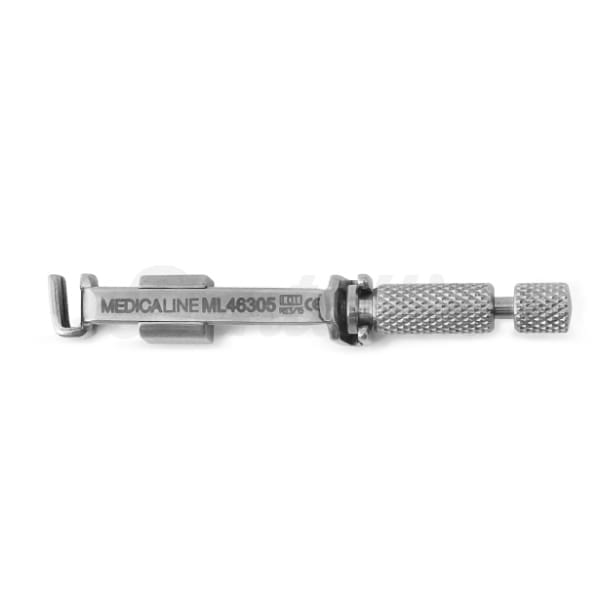
Garrison Composi-Tight 3D Fusion Sectional Matrix System
Do you have difficult class II cases? The Composi-Tight 3D Fusion Sectional Matrix System could be the ultimate solution for predictable results and we'll tell you why.
The Composi-Tight 3D Fusion sectional matrices provide tight and perfect contacts thanks to their advanced design, in addition this system has rings with Soft Face technology to fit the extra-soft matrices to the contour of the tooth to help you perform a perfect restoration without the matrix moves out of place. This Garrison matrix system is highly intuitive and easy to use, with features that will make your job easier and more efficient.
Composi-Tight 3D Fusion Firm Matrix: Garrison Sectional Matrix Kit
The Composi-Tight 3D Fusion Sectional Matrix System has three types of rings: the green ring for wide preparations, including those with a missing cusp; the orange ring that has Ultra-Grip retentive extensions that prevent movement and; finally, the blue ring with reinforced marginal ridge on the Soft-Face silicone tips, this ring is perfect for your cases with short clinical crowns or crowded teeth.
- Easy to use.
- Ultra-Grip retentive tips that prevent the ring from slipping.
- Die 70% more resistant to deformation than others, maintaining its thickness of 0.038 mm.
- Solution for all class II cavities.
- The rings are autoclavable.
- Kit includes 3 types of rings, 70 matrices of 5 different sizes, 80 wedges and 4 different sizes and a forceps to position the ring.
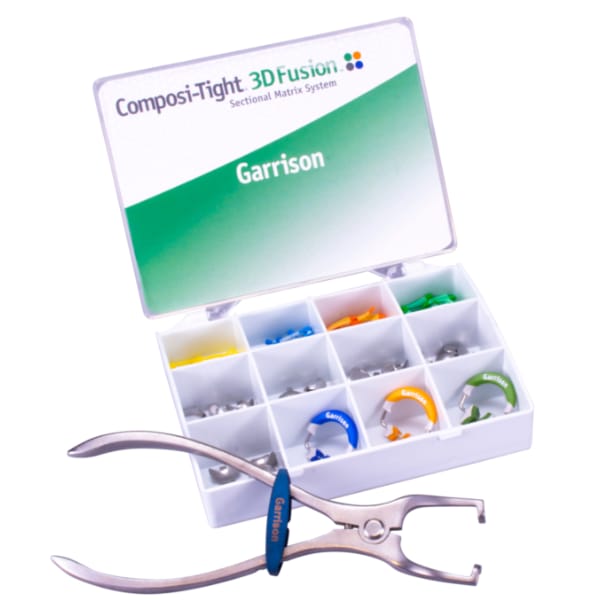
Go to Composi-Tight 3D Fusion Garrison Sectional Matrix System
Garrison Strata-G Sectional Matrix System
Garrison's Strata-G Sectional Matrix System provides an anatomical 270º Seal that prevents burrs and over-contoured margins.
The Strata-G system has been specially designed for the creation of perfectly anatomical and narrow contact points in class II composite restorations. The sectional matrix bands ensure the reconstruction with the proper anatomy on the tooth, while the three models of rings create the necessary separation between the teeth for the adaptation of the bands, obtaining as a result a natural and close contact.
Strata-G: Garrison Sectional Matrix Kit
Strata-G rings are designed to perform a wide variety of Class II composite restorations. The kit includes all three types of rings, plus matrix bands in 5 different sizes and 80 wedges in 4 different sizes. In addition, Garrison Premier forceps for positioning the rings.
- Indicated for class II posterior restorations and in wide preparations.
- Rings feature StrataBond silicone tip for overcontour reduction.
- Ultra-Grip system that prevents movement of the ring.
- Highly durable, strong and easy to open rings, made of nickel titanium and reinforced with Peek.
- Non-stick matrices with improved marginal ridge and graduated subgingival extension.
- Strata-G Ultra-Adaptative wedges with wings that adapt to the matrix creating a tight seal.
- System organized by color to facilitate efficient organization.

Ultradent Halo Sectional Matrix System
The Ultradent Halo sectioned matrix system provides an ideal separation between the teeth, thanks to the design of its ring that fits with high precision and the wedge that provides an active and always careful separation with soft tissues. In addition, the bands are perfectly designed to give the tooth a natural contour, thus providing uniform and precise contact points.
Perhaps the most distinctive advantage of this innovative matrix system is that the wedges are active, that is, they work by separating the teeth in a comfortable way for the patient. Another interesting advantage is that the ring of the Halo system is universal, this means that you only have to use one ring for both molars and premolars.
Halo Sectional Matrix System: Ultradent Original Band Kit
With the Halo matrix system you can make highly anatomical contours in less time, in addition to providing perfectly adjusted contact points thanks to the fact that a very good separation of the teeth is obtained with the nitinol ring and active wedges.
- Easy to use.
- Anatomical restorations.
- High durability ring, with memory and resistant up to 1000 sterilization cycles.
- Kit includes 2 rings, 25 matrix of each size (5) and 25 wedges of each size (3) and dispenser carousel.
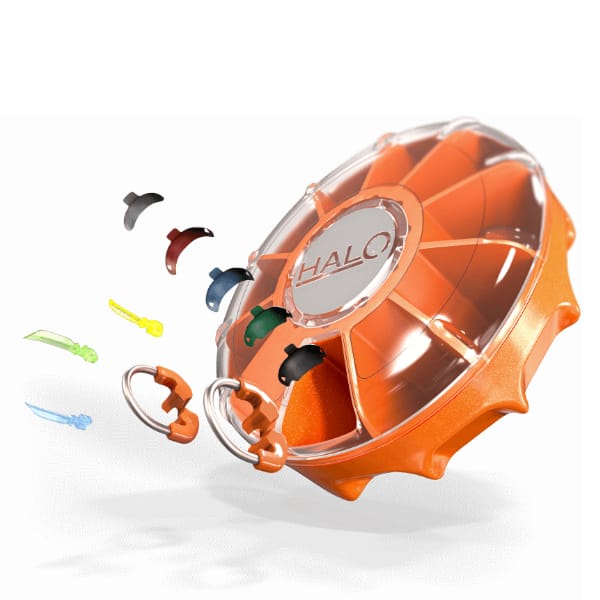
In conclusion, making a good point of contact is a difficult task and remains a challenge for today's restorative dentistry, but fortunately in our times we have matrix systems very capable of achieving them and which have surpassed the classic Tofflemire matrix holder, which has the drawback of generating axial emergence profiles that are not very anatomical, straight and difficult to improve.
The sectional matrix systems are a great alternative, which, although they have a higher cost, are also their benefits, since they allow a better fit in interproximal spaces to achieve a better point of contact. contact and a more natural and anatomical contour.
Thanks for reading! Did you like our article? If you want to always be up to date with the latest advances in dentistry, don't forget to follow us on our social media. For any question or comment, do not hesitate to write to us. See you soon!




